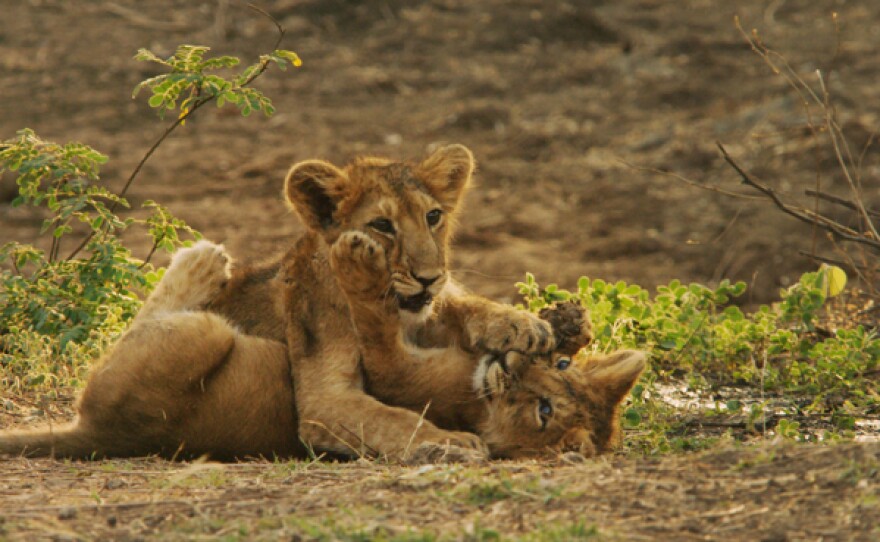In India’s westernmost state, Gujarat, the Asiatic lion has been making a comeback after being hunted for centuries to the brink of extinction. Today these cats are only found in Gujarat, thanks to a hunting ban imposed decades ago when their numbers had dropped to a mere 20. The population has now increased to over 500. But with success comes a downside: the Gir Forest Sanctuary, home to the Asiatic lions, has reached its natural capacity. Now, many are leaving the reserve. Lions are also leaving because dairy farmers no longer bring their herds to graze there, and the lions, which preyed upon the cattle, have lost a major food source. As the film explains, many farmers believe the big cats followed them out of the forest as lions are now making their homes on the outskirts of rural villages. But rather than view the lions as predators, farmers see them as valued members of the community.





As many small communities and lion prides have become neighbors, they have joined forces in an unusual experiment. The lions—which roam remarkably freely among the populace—protect the farmers’ fields from raids by nocturnal deer and antelope, which in turn provide the pride with hearty meals. These Asiatic lions have adapted their hunting techniques, previously used on open plains, to work alongside people in rural farmlands. Whether this new relationship between humans and predators can succeed in the long-term is unknown, but with lions having made a comeback from near extinction, it’s a promising start.
"India’s Wandering Lions" describes how the lions are getting special protection, what their lives are like, how they deal with other wildlife, and the interesting new partnership that has developed between the lions and people. Given the rarity of these wild Asiatic lions in the world, wildlife rescue teams are on call around the clock in Gujarat to respond to any reports of injuries to the animals. The program shows sick lions being brought to rescue centers where their conditions are assessed and treatments begun. But in addition to medical issues, some of these rare animals are also brought to the rescue center for reasons of public safety. One lioness is brought in because she killed a man. Her fate, however, isn’t quickly decided until the motive behind the attack is investigated.
Filmmakers use thermal cameras to track the movements of the lions, their cubs, and other wildlife who make their home outside the reserve because most lions who live near people are almost completely nocturnal. These infrared cameras capture members of the pride on the prowl through farmlands looking for their next meal and heading down the road towards the villages where the locals just accept the fact that the carnivores sometimes kill their cattle. As the film shows, villagers gather to watch a lion return to a kill to finish its meal and there are no signs of aggression shown by the wild predator. Although there’s no retribution for the kill, the forest rangers and residents need to know where the lions are and what they might do next.
NATURE is a production of THIRTEEN Productions LLC for WNET. For NATURE, Fred Kaufman is executive producer. "India’s Wandering Lions" is produced by Ammonite Films & Kosmik Global Media Pvt. Ltd. in association with Earth Touch.
Past episodes of NATURE are available for online viewing. NATURE is on Facebook, Tumblr and you can follow @PBSNature on Twitter.
India's Wandering Lions | Preview
"As India’s population booms





